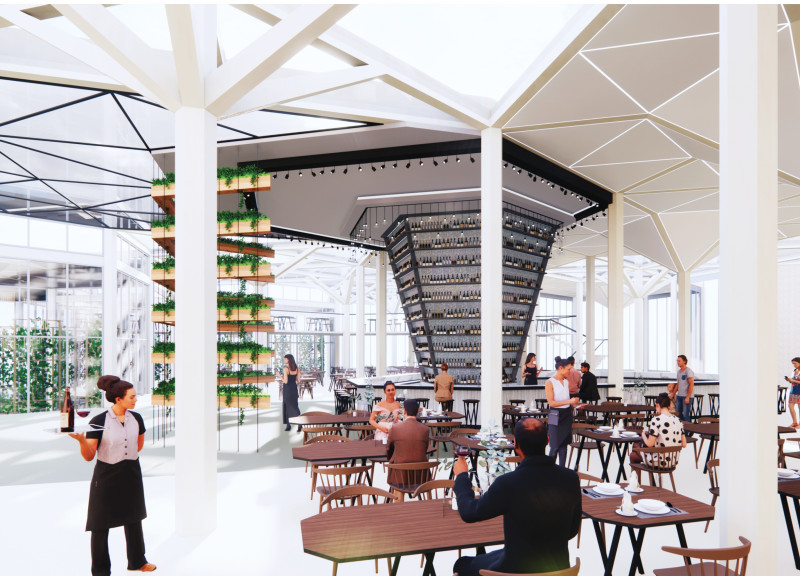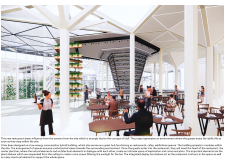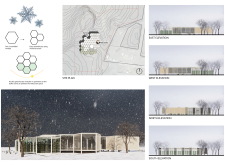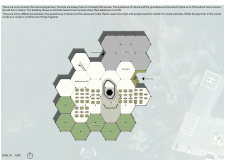5 key facts about this project
The restaurant's layout features a series of hexagonal modules, optimizing the spatial arrangement to create an open and inviting atmosphere. The central dining area is oriented to capture maximum natural light, and it includes a circular bar that acts as the focal point. This design promotes an engaging culinary experience, inviting patrons to not only enjoy food but also appreciate the natural vistas outside. The incorporation of greenhouse modules around the exterior of the building serves a dual purpose: they provide insulation, support plant growth, and blur the lines between indoor and outdoor environments.
Unique Design Strategies and Sustainability
This project distinguishes itself from conventional restaurant designs through its innovative modular approach. The hexagonal layout not only maximizes space efficiency but also enhances the visual connection to the landscape. The integration of vertical planters within the dining area promotes air quality and introduces a dynamic element to the restaurant's interior.
Material selection plays a crucial role in this design, employing wood for its warmth, glass to foster transparency and connection, and steel for structural integrity. These materials support the sustainable design ethos by prioritizing local sourcing and recyclable options. Additional features, such as rainwater harvesting systems and energy-efficient technology for heating and cooling, underline the commitment to reducing environmental impact while enhancing the dining experience.
Community-Centered Spaces and Versatility
Beyond its primary function as a dining establishment, the hybrid restaurant serves as a community hub. The multipurpose hall is designed for various uses, including events that showcase local art and culture. This adaptability not only addresses the practical needs of the community but also enhances social interaction, positioning the restaurant as a vital part of a larger community narrative.
The architectural designs reflect a careful balance between form and function, employing design principles that prioritize user experience while considering environmental implications. The blending of culinary space with community engagement exemplifies a contemporary approach to restaurant architecture, encouraging visitors to explore their environment while enjoying diverse culinary offerings.
For a deeper understanding of the architectural plans, sections, and design details, readers are encouraged to explore the project presentation to fully appreciate its nuances and innovative ideas.

























